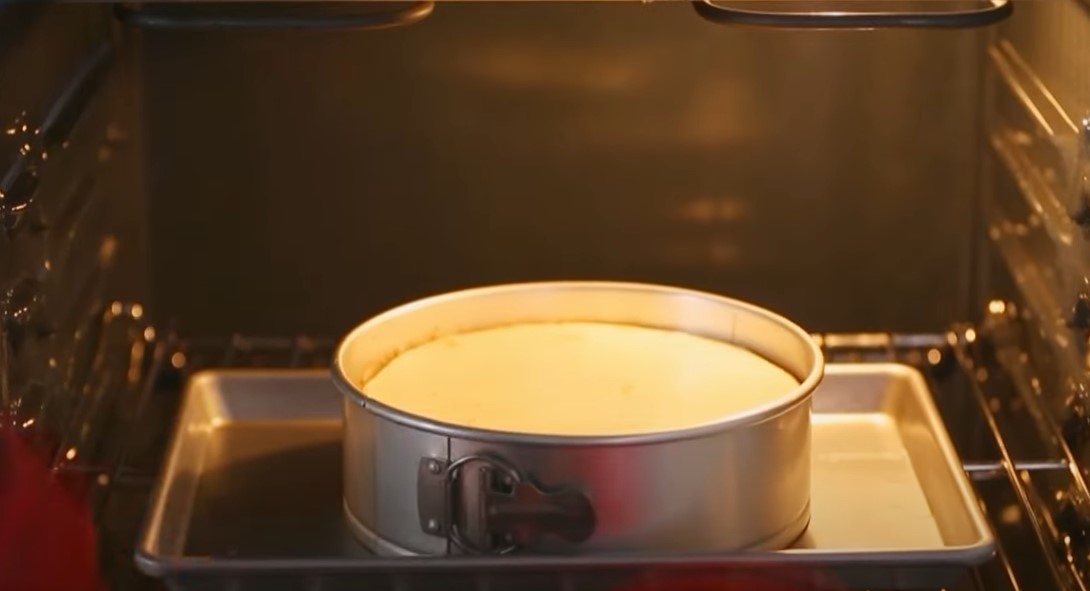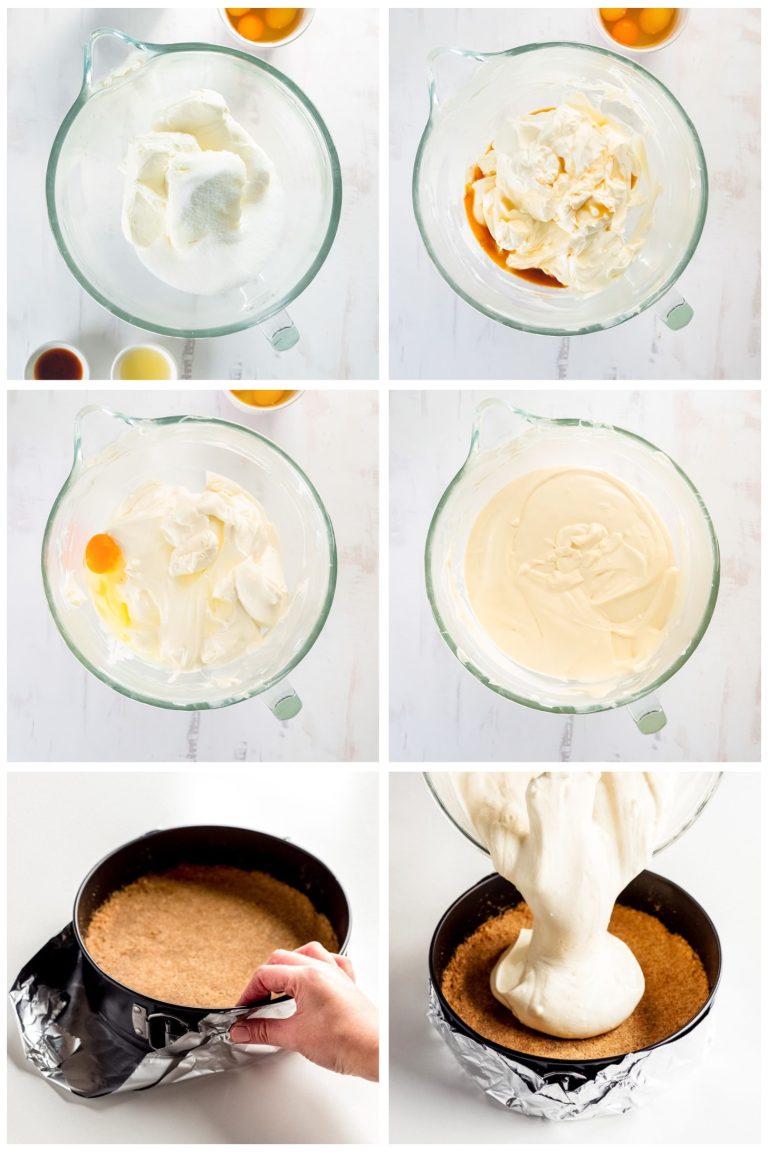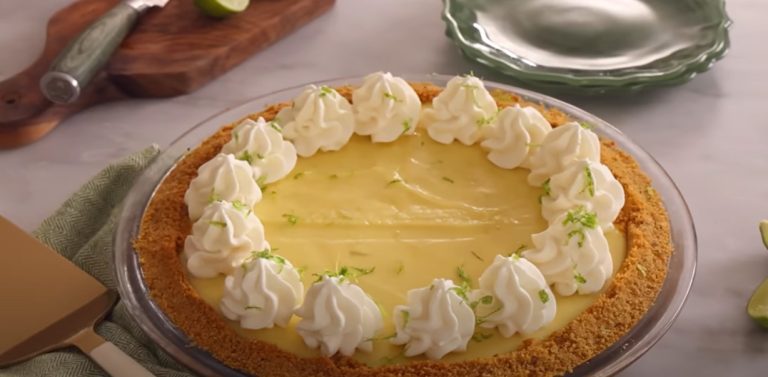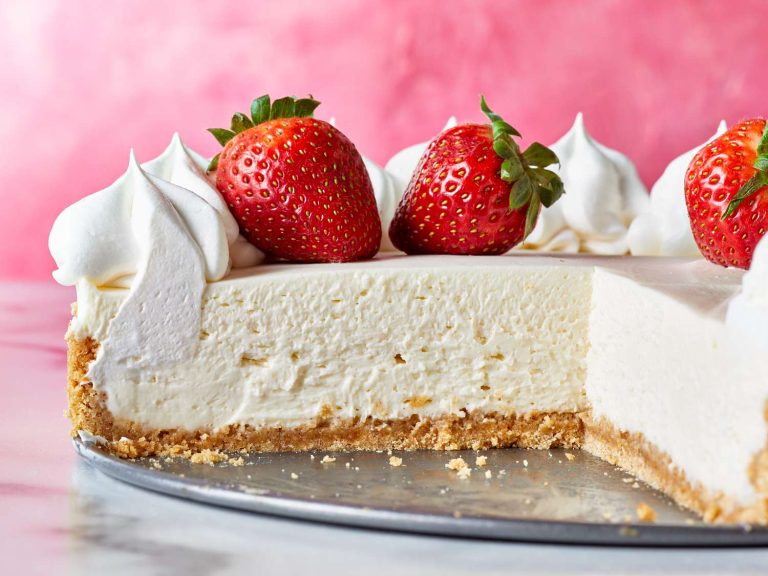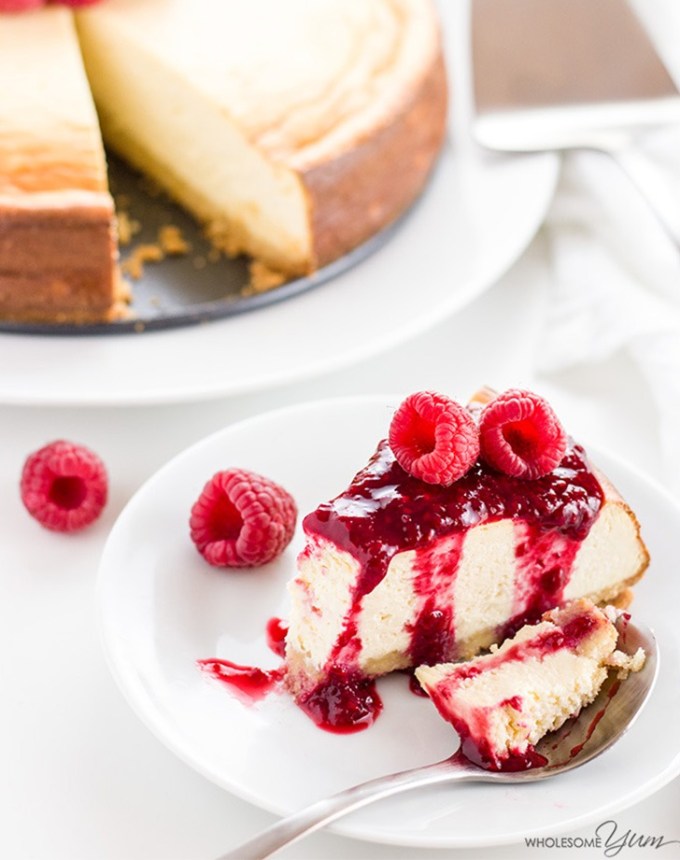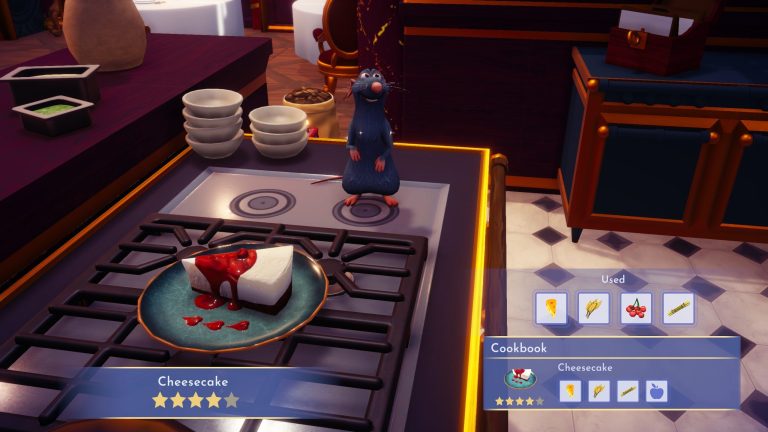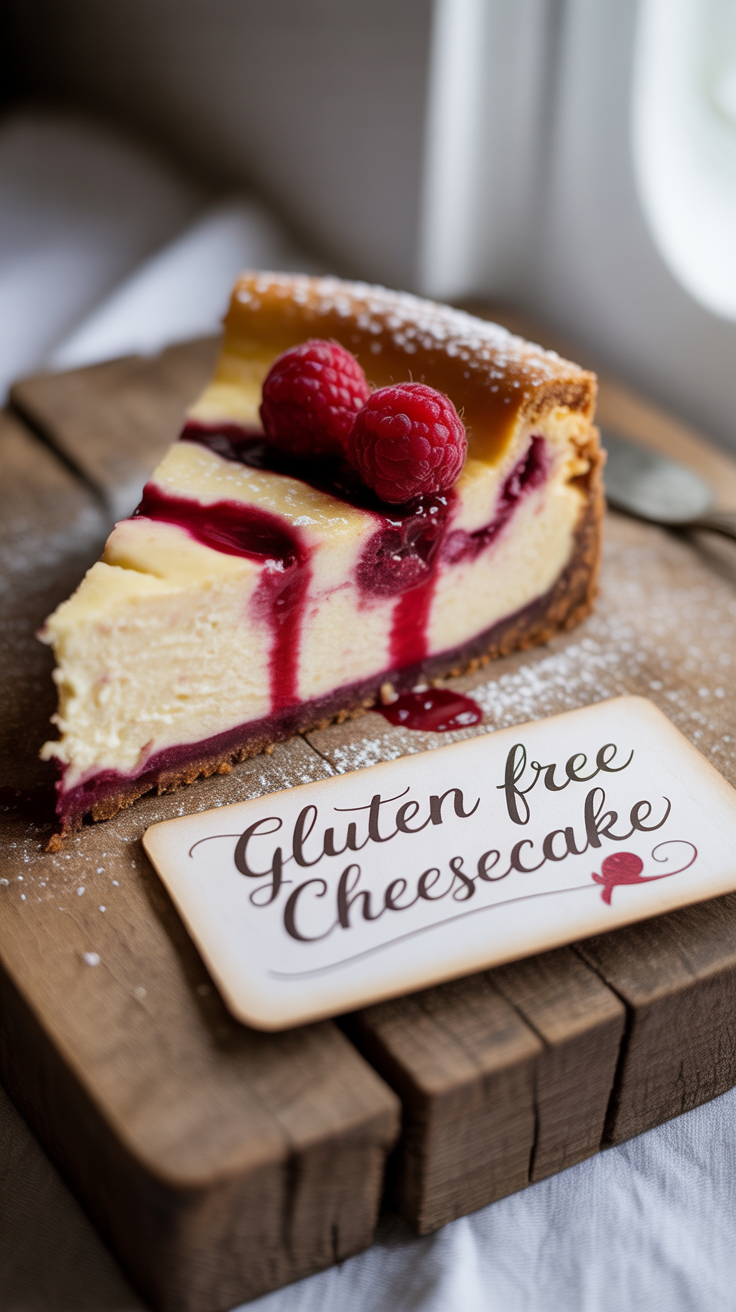How Long to Bake Cheesecake? Essential Tips & Timing
Imagine the perfect slice of cheesecake: rich, creamy, and smooth with a hint of sweet indulgence that melts in your mouth. You’ve gathered all the ingredients and followed your favorite recipe, but the million-dollar question looms: how long should you bake your cheesecake to achieve that flawless texture?
How long to bake cheesecake? Bake cheesecake for 50–70 minutes at 325°F (163°C) until the edges are set and the center slightly jiggles. Baking time depends on pan size and oven. Avoid overbaking to prevent cracks. Let it cool gradually before chilling for best texture.
It’s not just about following a recipe—it’s about mastering the art of timing to ensure your cheesecake turns out just right. You know that baking a cheesecake is a delicate process. Too little time in the oven, and your masterpiece might be undercooked; too long, and it could end up with cracks or a rubbery texture.
But don’t worry, because understanding the nuances of baking time can make all the difference. We’ll uncover the secrets to the perfect bake time for your cheesecake, so you can impress your guests and satisfy your own sweet cravings. Whether you’re a seasoned baker or new to the world of cheesecakes, this guide will give you the confidence you need to create a dessert that everyone will love. Read on to discover the tips and tricks that will transform your cheesecake from good to unforgettable.
How Long to Bake Cheesecake?
Perfect Cheesecake Temperature
Baking cheesecake to perfection is an art. Temperature plays a crucial role. Achieving the right temperature ensures a smooth, creamy texture. The perfect cheesecake temperature affects its taste and appearance. It’s essential for a delightful dessert experience.
Understanding The Ideal Baking Temperature
The ideal baking temperature for cheesecake is 325°F. It ensures even cooking. This temperature allows the cheesecake to set properly. A lower temperature prevents cracks. It keeps the texture rich and creamy.
Monitoring The Internal Temperature
Use a food thermometer to check internal temperature. Aim for 150°F to 155°F. This range indicates a well-baked cheesecake. Insert the thermometer in the cake’s center. Ensure it doesn’t touch the pan.
Adjusting For Different Oven Types
Different ovens may require temperature adjustments. Convection ovens cook faster. Reduce the temperature by 25°F for such ovens. Regular ovens stick to the standard 325°F. Always monitor the cheesecake while baking.
Signs Of A Perfectly Baked Cheesecake
A perfectly baked cheesecake has a slight jiggle. The edges should be firm. The center should wobble like gelatin. It will set as it cools. Wait for it to cool before slicing.

Credit: www.recipetineats.com
Choosing The Right Pan
Baking a cheesecake can be a delightful experience, but selecting the right pan is crucial. The pan you use not only affects the texture but also the baking time and ease of removal. Have you ever struggled with a cheesecake sticking to the sides or cracking at the top? The right pan can make all the difference.
Understanding Pan Materials
Different materials conduct heat differently. Glass pans, for instance, tend to heat slowly and might require a longer baking time. Metal pans, like aluminum, distribute heat evenly for a smooth bake.
Consider your cheesecake recipe. If it requires a water bath, a springform pan is ideal. Its removable sides allow for easy release without damaging the cake.
Size Matters
Think about the size of your cheesecake. A standard 9-inch pan is common, but altering the size can change the baking time. Smaller pans will need less time in the oven.
Be mindful of the depth. A deeper pan might result in a denser cheesecake, requiring a longer bake to ensure the center sets properly.
Non-stick Vs. Traditional
Non-stick pans can be a blessing or a curse. While they offer easier release, they might brown the edges more quickly. Traditional pans may require some greasing but offer a classic texture.
Think back to the last time you made a cheesecake. Did it come out smoothly or was the release a challenge? Choosing between non-stick and traditional can depend on your preferred finish.
Personal Experience: The Perfect Pan
I once tried a silicone pan for a cheesecake. It was easy to remove, but the bake was uneven. That taught me the importance of heat conduction.
Have you ever experimented with different pans? Sometimes, the trial and error process can lead you to your perfect pan.
Making Your Choice
Consider your priorities. Are you looking for ease of removal, even baking, or a specific texture? Your choice of pan can influence all these factors.
Next time you bake a cheesecake, ask yourself: What do I want from my cheesecake? The answer might guide you to the right pan.
Timing Based On Cheesecake Type
Cheesecake is a beloved dessert with various types and baking times. The perfect texture depends on the type you are making. Understanding the timing for each type ensures a delightful result. Each cheesecake type requires specific baking instructions. Let’s explore how long to bake different cheesecake styles.
Classic New York Cheesecake
New York cheesecake has a rich, creamy texture. Bake it at 325°F for 50-60 minutes. The center should jiggle slightly when done. Allow it to cool gradually to avoid cracks.
No-bake Cheesecake
No-bake cheesecake skips the oven entirely. Chill it in the fridge for at least 4 hours. Overnight chilling works best for a firm texture. This type is perfect for summer days.
Mini Cheesecakes
Mini cheesecakes are quick and easy. Bake them at 325°F for 20-25 minutes. They should be set, with a slight jiggle in the center. Perfect for parties or quick treats.
Japanese Cheesecake
Japanese cheesecake is light and fluffy. Bake it in a water bath at 320°F for 60 minutes. Leave it in the oven with the door ajar for an extra 15 minutes. This helps maintain its airy texture.
:max_bytes(150000):strip_icc()/8350-chantals-new-york-cheesecake-DDMFS-4x3-426569e82b4142a6a1ed01e068544245.jpg)
Credit: www.allrecipes.com
Common Baking Mistakes
Baking cheesecake requires precision to avoid common mistakes. Many overbake, leading to cracks or dry texture. Typically, bake at 325°F for 45 to 60 minutes. Adjust time for your oven to ensure a creamy result.
Baking a cheesecake to perfection can be a delightful yet challenging task. Even seasoned bakers can stumble upon common mistakes that can affect the final outcome. Understanding these pitfalls can save you from the heartbreak of a cracked, soggy, or dense cheesecake.
One time, I thought I nailed my cheesecake recipe, but the result was an overcooked mess. I realized I had missed some key details during baking. Have you ever wondered why your cheesecake might not turn out as expected? Let’s dive into some common baking mistakes and how to avoid them.
Overmixing The Batter
It’s tempting to mix the batter until it’s completely smooth. However, overmixing can introduce too much air, leading to cracks on the surface. Mix until just combined to maintain a creamy texture.
Ignoring The Water Bath
Skipping the water bath can lead to uneven baking and unsightly cracks. A water bath regulates the temperature, ensuring the cheesecake bakes gently and evenly. If you’re hesitant, try wrapping the pan securely with foil to prevent water from seeping in.
Not Pre-baking The Crust
A soggy crust can ruin the perfect slice. Pre-baking the crust ensures it remains crisp and adds a delightful contrast to the creamy filling. Just a few minutes in the oven before adding the filling can make all the difference.
Opening The Oven Door Frequently
Every time you open the oven door, the temperature drops. This can cause the cheesecake to bake unevenly. Resist the temptation to peek often; instead, rely on the oven light to check the progress.
Ignoring Cooling Time
Cooling the cheesecake too quickly can cause it to crack. Let it cool gradually in the oven with the door slightly open. Afterward, refrigerate it for several hours to achieve the perfect consistency.
Not Using Room Temperature Ingredients
Cold ingredients can lead to a lumpy batter. Allow your ingredients to reach room temperature for a smoother mix. This small step can significantly improve the texture of your cheesecake.
Cheesecake baking can be a rewarding experience when you avoid these common mistakes. Pay attention to each step, and you’ll be rewarded with a creamy, delicious cheesecake that impresses everyone. Have you identified any other mistakes in your baking adventures? Share your insights in the comments below!
Testing For Doneness
Testing for doneness is crucial when baking cheesecake. You want it perfectly baked, with the right texture. Overbaking can lead to cracks and dryness. Underbaking leaves it too soft. How do you know when your cheesecake is ready?
Using The Jiggle Test
Gently shake the cheesecake pan. The center should jiggle slightly. The edges should be firm. This means it’s ready. If the center is too wobbly, bake longer.
Checking With A Thermometer
Insert a kitchen thermometer into the center. The ideal temperature is around 150°F. This ensures the cheesecake is baked through. Avoid higher temperatures, which can overcook it.
Observing The Surface
The surface should be matte, not glossy. A slight golden hue is desirable. If you see large cracks, it may be overbaked. Small cracks are normal.
Using A Toothpick Test
Insert a toothpick near the center. It should come out mostly clean. A few moist crumbs are okay. Avoid batter sticking to the toothpick.
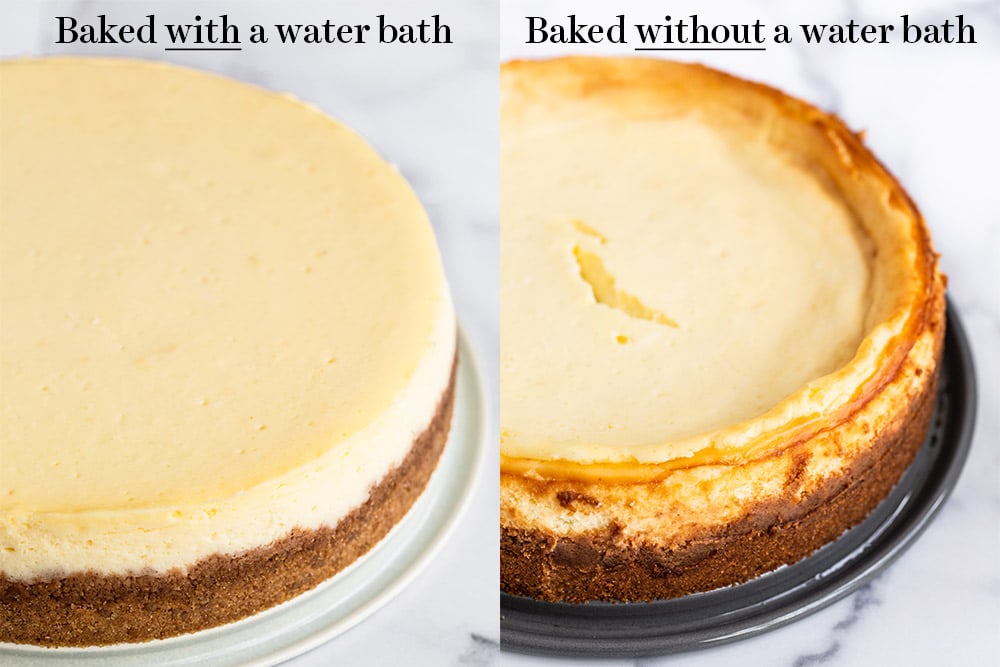
Credit: handletheheat.com
Frequently Asked Questions
How Long To Cook Cheesecake At 350 Degrees?
Cook cheesecake at 350 degrees for 50-60 minutes. Check for a slightly jiggly center. Let it cool completely before serving. Use a water bath to prevent cracks. Adjust time if using different sizes or types of pans. For best results, keep the oven door closed during baking.
How Long Should Cheesecake Sit In The Oven?
Bake cheesecake in the oven for 45-60 minutes at 325°F. Ensure the edges are set and the center slightly jiggles. Cooling is essential for firm texture. Use a water bath to prevent cracks. Adjust time based on recipe specifics and oven variations for perfect results.
How Long To Bake Cheesecake At 325 Reddit?
Bake cheesecake at 325°F for 50 to 60 minutes. Ensure the edges are set but the center jiggles slightly. Let it cool completely before refrigerating for optimal texture. Use a water bath to prevent cracks and achieve a creamy consistency.
Adjust time for different oven types or cheesecake sizes.
What Temperature And Time For Cheesecake?
Bake cheesecake at 325°F (163°C) for 50-60 minutes. Ensure the center is slightly jiggly. Let it cool gradually to prevent cracking.
How Long Should Cheesecake Be Baked?
Bake cheesecake for 50-60 minutes at 325°F. The edges should be firm.
Conclusion
Baking cheesecake requires patience and precision. Each step matters. Follow the recipe closely. Adjust baking time based on your oven’s quirks. Always check for doneness with a gentle jiggle. Too firm? It might be overbaked. Perfect cheesecake has a soft, creamy texture.
Allow it to cool slowly. This prevents cracks. Refrigerate for the best flavor. Enjoy your homemade cheesecake with friends and family. Practice makes perfect, so don’t worry. Experiment with toppings for variety.
Related Recipes

